
The DC-8 on the ramp at NASA Armstrong for our sunrise boarding. Credit: Christina Williamson
Last Friday, July 29, was the first real science flight of the mission. Driving down to the base at 4am, Mumford and Sons’ ‘Cave’ blasting through the stereo, I definitely felt excited (and a little sleepy). On-board we powered up the instruments and ran through our pre-flight checklist. We’d made some changes the previous day to allow an instrument whose inlet had to be taken off the plane because of vibrations, to sample through ours. When we ran air through a filter into our system to check for leaks, we saw a small one had appeared. Thus ensued a tense 20 minutes of checking through and tightening the new fittings, but in the end we managed to get rid of the leak.

Pre-flight meeting in the lab at NASA-Armstrong before the flight with crew, pilots and science team. Credit: Christina Williamson
After a quick meeting in the hanger, where we discussed the flight plan and went over science goals and safety procedures, we were good to go. This mission is different from most aircraft-sampling campaigns because we are not chasing particular features, like biomass burning plumes or storms, but just aiming to get representative slices of the ‘normal’ atmosphere, whatever that may be.
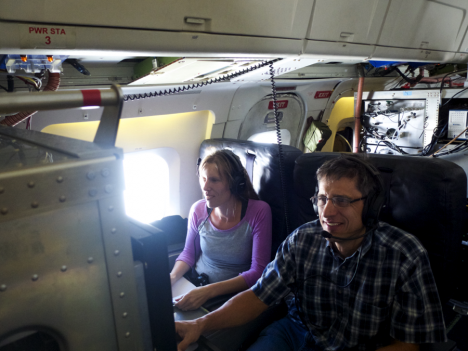
Agnieszka Kupc, NOAA/University of Vienna running our suite of instruments measuring aerosol microphysical properties and Dan Murphy, NOAA, running an instrument looking at the chemical composition of individual aerosol particles during the ATom equator flight. Credit: Christina Williamson
Taking off the air was hazy and dusty, but soon got cleaner as we headed out over the Pacific. The flight plan was a simple one: get over the ocean, fly south to the equator, and then come back again, all the while going up and down as many times as fuel allows. In the end that made for 8 profiles. There’s not much change of scenery on a path like this, just sea and clouds, but the unchanging, rather featureless expanse has a calming kind of beauty to it.
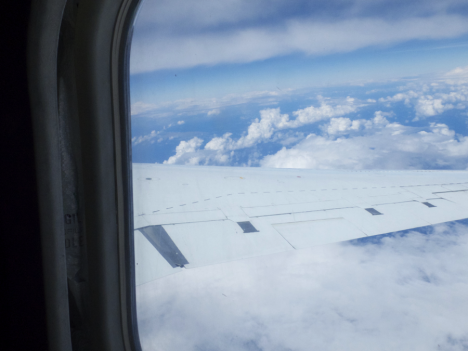
A typical view from the equator flight on the DC-8. Credit: Christina Williamson
Although there is not a lot in terms of visual features, the data coming in from my instrument shows a host of variation hidden at sizes invisible to the human eye. There are times when all of the particles are really small, and we can infer (although we need to carefully check this from the data later) that these have formed recently from the gas phase in a process called nucleation. Sometime we pass through a layer of much larger particles on an ascent or descent. These can be pollution layers transported out from the continents, or they could be salt from the ocean or transported (again, combining our data with lots of data from other instruments is necessary before we can say anything for sure).
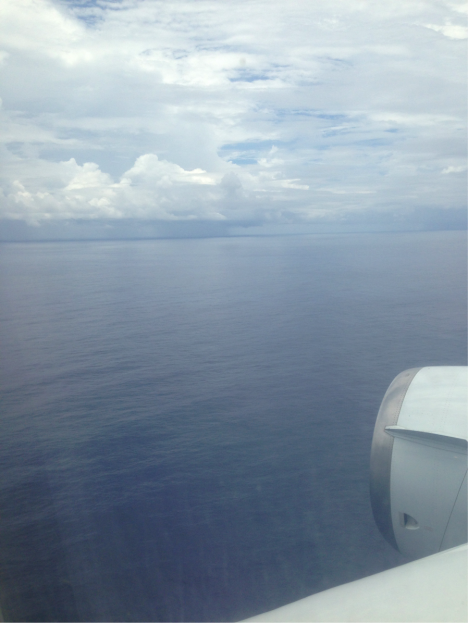
View at the bottom of a low profile near the equator. Credit: Christina Williamson
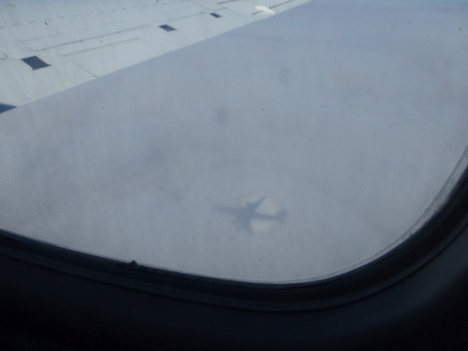
Haloed shadow of the DC-8 on the clouds below. Credit: Christina Williamson
Another exciting thing about being on a research plane is that we get to see more of how the plane is flown than on commercial flights. When it’s safe we can get permission to go up and sit in the extra seat in the cockpit. I got to sit in it for landing, which was really exciting. The perspective from there is very different from back in the body of the plane. The pilots are very busy, communicating with the different air-traffic-control stations as they come in to land, and guiding the plane in. The runway seems to come up exceedingly fast and looks impossibly small until we’re right on it.
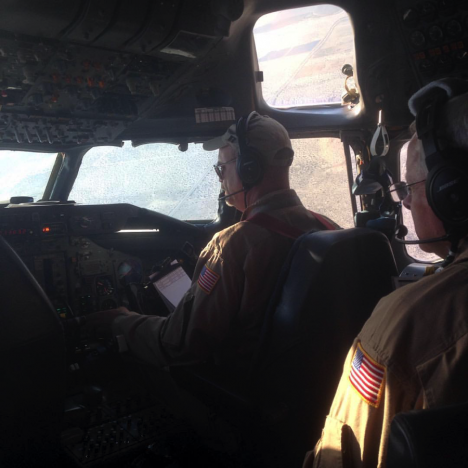
In the cockpit during landing back in California. Credit: Christina Williamson
From the equator, we’ll be heading up north over the arctic on Monday, but for now, after 10 hours of flying, we’ll be taking a couple of days back at base in California to ready the instruments for the rest of the trip and analyze the data we’ve got so far.
Christina Williamson blogs regularly about the ATom Mission and other adventures in atmospheric science at christinajwilliamson.wordpress.com and tweets as @chasingcloudsCW.



